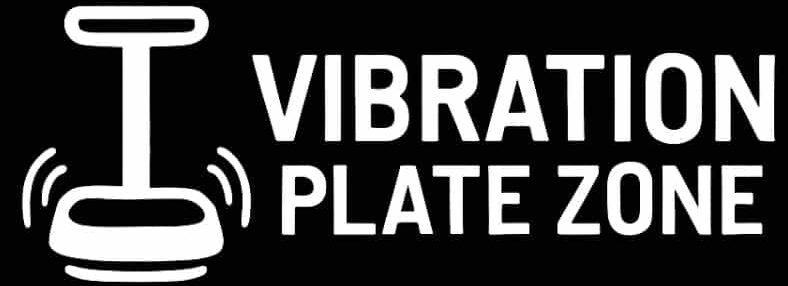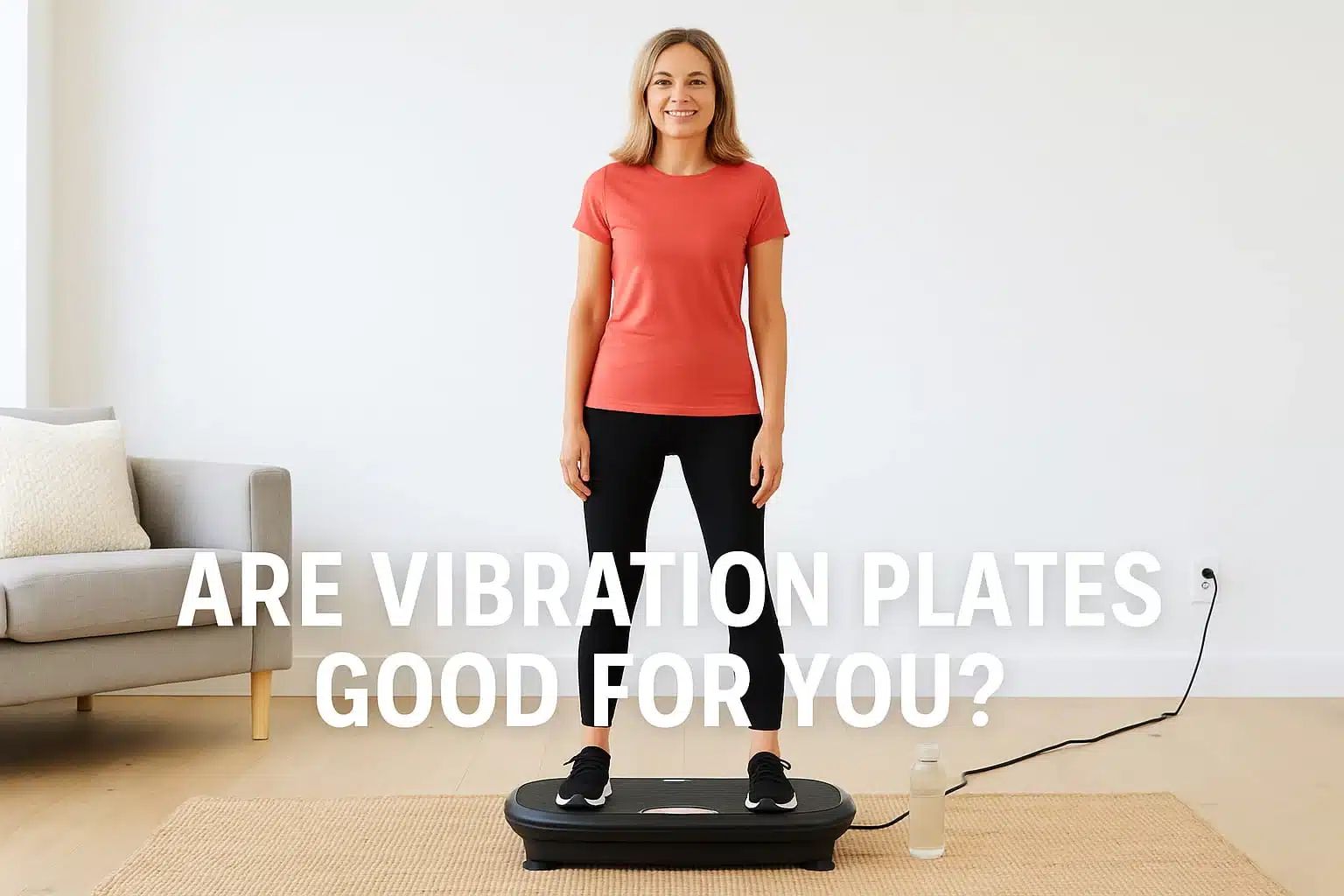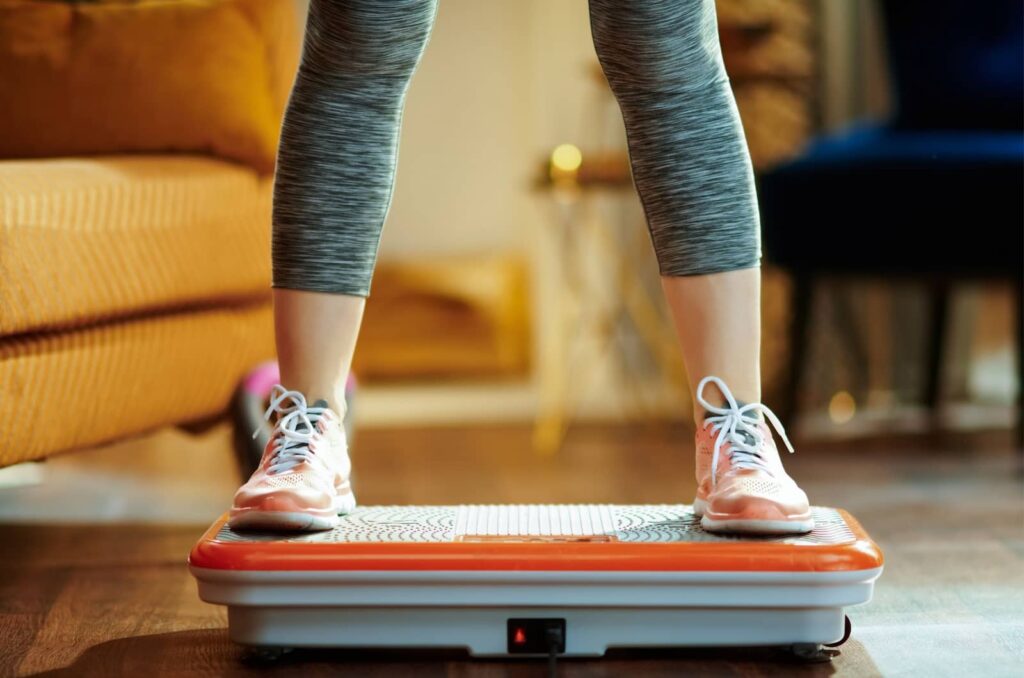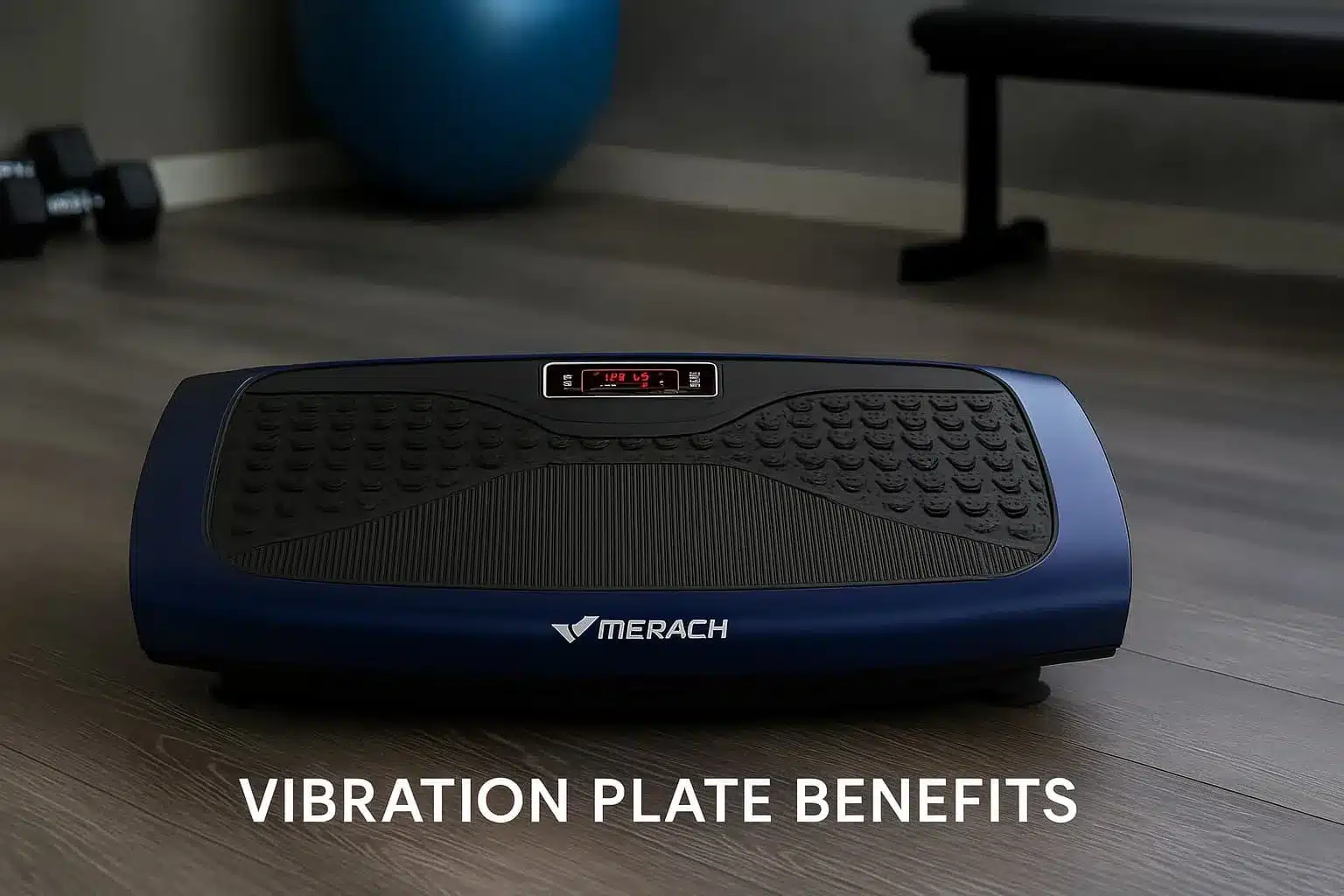Are vibration plates good for you? When I first started training on a plate, simple moves felt harder in a good way. A routine squat suddenly required more balance, more focus, and more muscle activation because the vibrations triggered rapid contractions across stabilizers and prime movers.
Shorter sessions can become more efficient without replacing traditional training. A 10-minute block can feel like a much longer bodyweight routine when intensity is dialed in, and that matters on busy days. According to my breakdown of vibration plate benefits, the machines also improve circulation, balance, and recovery for time-crunched workouts. Those gains are why I keep using mine during packed weeks.
How Vibration Plates Work on the Body
At their core, plates deliver controlled vibrations that the body must constantly counter. That stabilization response recruits deep core muscles along with legs and hips; the effect is noticeable even in static poses like a wall sit or plank. I still remember my first session; my abs worked hard even though I wasn’t doing a dedicated core move.
The early research focus was bone and muscle preservation for astronauts; on the ground, the same physics mimic weight-bearing stimulus at lower loads. If you want the nuts and bolts, my guide on what is a vibration plate explains frequency ranges, amplitude settings, and platform types, which helps new users avoid guesswork. That context makes early progress smoother and safer.
Are Vibration Plates Good for Weight Loss?

People often ask about fat loss. My answer is yes, with realistic expectations. A plate won’t burn fat by simply standing on it, but it makes standard exercises more demanding, which increases total energy use in less time. Pairing it with a sensible diet and walking changed my weekly burn more than I expected.
When I run intervals, heart rate rises faster on moves like lunges and push-ups. Equipment choice matters too; the best vibration plate for weight loss group tends to include models with steady low-to-mid frequencies, useful programs, and stable decks that encourage longer adherence. I prefer short blocks that alternate squats with planks for efficient sessions.
Are Vibration Plates Good for Lymphatic Drainage?
The lymphatic system relies on muscle movement to push fluid; it has no dedicated pump. A plate stimulates gentle whole-body contractions that can reduce that heavy-leg feeling after long sitting or standing. I noticed less ankle puffiness when I moved my sessions to morning and kept them light.
If fluid management is a priority, my review of the best vibration plate for lymphatic drainage highlights platforms that support circulation with stable stances and calmer settings, which are easier to keep up daily. Consistency matters more than intensity when lymphatic relief is the goal.
Are Vibration Plates Good for Osteoporosis and Bone Health?

Bone density declines with age, especially after menopause. Vibration exposure provides a low-impact loading signal that can support bone remodeling while also improving balance. In my family, light sessions plus simple squats on the plate helped stability and made everyday tasks feel safer.
Choosing safer hardware helps adherence. Our selection of the best vibration plate for osteoporosis points to machines with secure platforms and gentle frequencies that suit cautious users. Balance handles and lower-intensity programs reduce fear of falling, which keeps training regular.
Are Vibration Plates Good for Neuropathy?
Neuropathy complicates strength and circulation in the lower limbs. A plate can stimulate nerves and blood flow, and several users I know describe their feet feeling more awake after short sessions. Shoes and low settings usually feel better at the start, and I like timers that cap exposure automatically.
Safe options exist if you need softer ramps and clear controls. Our roundup of the best vibration plate for neuropathy highlights devices with gentler programs and solid grips that reduce accidental slips. Always check sensation in your feet after sessions to avoid overdoing volume.
Practical Usage Tips for Vibration Plates
The most common beginner mistake is too much, too soon. I did the same thing and paid for it with sore calves for days. The fix was simple: shorter blocks and rest between sessions. Ten minutes, three times per week, is a workable on-ramp for most people.
Form beats intensity early on. Keep knees slightly bent, stack ribs over hips, and brace lightly through the midline. If you want step-by-step progression, our article on how to use a vibration plate lays out beginner and intermediate programs along with safety cues, which removes guesswork. Start light, then adjust amplitude only when form stays solid.
Are There Dangers of Vibration Machines?
Most healthy adults tolerate plates well, but some groups should avoid them. Pregnancy, pacemakers, acute joint or spinal issues, and certain post-surgical states are clear red flags. Even without those, too-long sessions or high settings can cause dizziness or headache; I learned to stop a block early at the first sign of either.
If you’re weighing risks, our coverage of dangers of vibration machines lists conditions that need medical clearance, plus safer ranges for frequency and time so you can self-monitor. When unsure, reduce intensity and shorten the session.
Exercises to Try on a Vibration Plate

Variety keeps training fresh. Squats build legs and glutes, planks challenge the core, and calf raises boost circulation in the lower legs. Push-ups feel tougher on a plate, so fewer reps can deliver the same stimulus, which helps when time is tight.
1. Squats
Muscles worked: Quads, hamstrings, glutes
How to do it: Stand with feet shoulder-width apart on the plate. Keep your chest lifted, push your hips back, and lower into a squat until thighs are parallel to the ground. Press through your heels to return to standing.
Tips: Hold onto the handles if balance is tricky. Start with 3 sets of 10–12 reps.
2. Plank
Muscles worked: Core, shoulders, back
How to do it: Place forearms or hands on the plate, step your feet back until your body is in a straight line from head to heels. Engage your core, keep hips steady, and hold.
Tips: Begin with 20–30 seconds and work up to 60 seconds. Keep your neck neutral to avoid strain.
3. Calf Raises
Muscles worked: Calves, ankles
How to do it: Stand tall on the plate with feet hip-width apart. Slowly lift your heels until standing on your toes, then lower back down with control.
Tips: Add a pause at the top for a stronger burn. Aim for 3 sets of 15–20 reps.
4. Push-Ups
Muscles worked: Chest, triceps, shoulders, core
How to do it: Place hands on the plate slightly wider than shoulder-width. Extend your legs back into a plank. Bend elbows to lower chest toward the plate, then press back up.
Tips: Because the vibration intensifies the work, 6–10 reps can be enough. Drop to knees if needed to maintain good form.
5. Step-Ups
Muscles worked: Legs, glutes, balance
How to do it: Stand in front of the plate. Step one foot onto the platform, press through the heel to lift your body up, then step down. Alternate legs.
Tips: Keep movements controlled; avoid stomping down. Start with 8–10 step-ups per leg.
6. Glute Bridges
Muscles worked: Glutes, hamstrings, lower back
How to do it: Lie on the floor with your feet flat on the plate and knees bent. Press through your heels to lift your hips toward the ceiling, squeeze at the top, then lower slowly.
Tips: Hold each lift for 2–3 seconds at the top. Try 3 sets of 12–15 reps.
7. Side Plank
Muscles worked: Obliques, shoulders, hips
How to do it: Place one forearm on the plate, stack your feet, and lift hips so your body forms a straight line. Hold, keeping core tight.
Tips: Start with 15–20 seconds per side and build up over time.
8. Lunge Holds
Muscles worked: Quads, glutes, balance
How to do it: Place your front foot on the plate and step your back leg behind. Bend both knees to form a lunge, keeping the front knee over the ankle. Hold the position while the plate vibrates.
Tips: Begin with 20–30 seconds per side; progress to 45–60 seconds.
9. Shoulder Press (with dumbbells or resistance bands)
Muscles worked: Shoulders, arms
How to do it: Stand on the plate holding light dumbbells. Bring weights to shoulder height and press overhead until arms are straight. Lower back to start.
Tips: Use lighter weights than usual, as the vibration intensifies the effort. Aim for 3 sets of 10–12 reps.
10. Russian Twists
Muscles worked: Core, obliques
How to do it: Sit on the plate with knees bent and feet lifted slightly. Lean back a little, clasp hands, and rotate your torso side to side.
Tips: Keep movements controlled; 10–12 twists per side is a good start.
For programming ideas, our collection of vibration plate exercises groups movements from beginner to advanced so you can scale cleanly without guessing. I like pairing squats with calf raises for lower-body days, and I add light stretching at the end while the platform runs at a calm setting.
My Final Thoughts - Are Vibration Plates Good for You?
After years of consistent use, I’m confident that vibration plates are good for you when you match settings to your goals and health status. They save time, improve circulation, and make basic moves more effective, which is a strong combination for home training. The key is smart dosing and steady habits.
If you’re choosing a first machine, our Lifepro Rumblex review explains why that model’s programs and platform design suit mixed goals like strength, mobility, and recovery. It has been the most adaptable unit in my home setup across different weeks.
FAQs
How long should I use a vibration plate each day?
To use a vibration plate each day, most people start with 10 to 15 minutes. As your body adapts, you can extend sessions to about 20 minutes while keeping one or two rest days each week.
Are vibration plates safe for seniors?
Yes, vibration plates are safe for seniors when set to low intensity. They support balance, circulation, and bone health, and short supervised sessions help new users get comfortable.
Can vibration plates help reduce belly fat?
Vibration plates can help reduce belly fat indirectly by increasing calorie burn and activating core muscles. Best results come from pairing plate sessions with protein-forward meals and daily walking.
Do vibration plates improve circulation?
Yes, vibration plates improve circulation by prompting rhythmic muscle contractions that push blood and lymph. This often reduces leg heaviness after sitting and can speed up post-workout recovery.
Who should not use a vibration plate?
People who should not use a vibration plate include those who are pregnant, have pacemakers, or face serious joint or spine conditions. Always ask your clinician for guidance if you have medical concerns.



